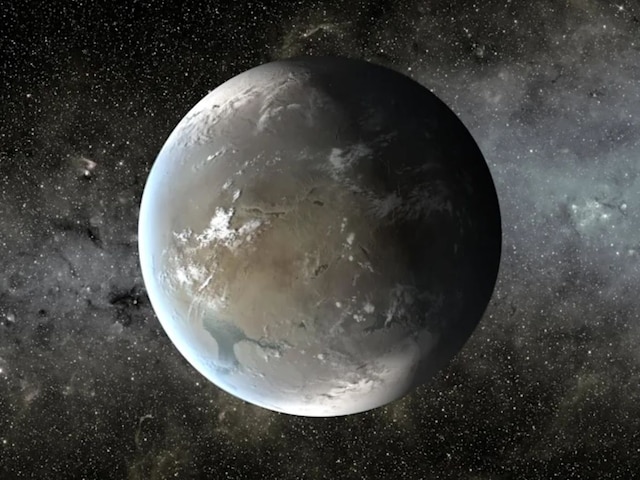Scientists got ‘super-meaning’, unique mysteries of the universe will open, its texture is something special
Last updated:
Discovered by Espresso on NASA’s TESS and Chile’s VLT, this super-end is not only a new planet, but can also be the key to understanding the pattern of planetary population in space. This discovery suggests that some groups in the universe …Read more

Scientists have discovered super meanings. (NASA)
Highlights
- Scientists from NASA and Chile discovered the super-back planet toi-776B.
- The toi-776 B is 1.8 times larger than the Earth and the mass is 5 times higher.
- This discovery can help solve the secret of planetary deficiency in the universe.
NASA’s transiting exoplanet survey satellite (TESS) and Espresso cameras on Chile’s Large Telescope (VLT) have discovered a new super-meaning planet. This research can help understand the lack of certain types of exoplanets in the universe, which can give answers to many questions in astronomy. It will also be known why the atmosphere is not on some planets.
The name of this new planet is “Toi-776 B”, which TESS discovered with its transit method. TESS measures small changes in the brightness of the wires, which are due to passing the front of the planet’s star. The toi-776 B is 1.8 times larger than the Earth and the mass is 5 times higher. This planet revolves around only 8.2 days around its stars, a red dwarf. Subsequently, the Espresso device on VLT confirmed this planet and used the Radial Velocity method to measure its mass.
How are super meanings
Super-Earth is such planets that are larger than the earth but are smaller than Neptune. Scientists have seen that there is a strange “deficiency” between super-meaning and mini-napachune in the universe, called “Radius Valley”. The reason for this deficiency could not be fully understood yet, but the discovery of toi-776B can help solve this puzzle.
Blow the atmosphere into space
Researchers believe that this decrease may be associated with the destruction of the atmosphere of the planets. Planets like Toi-776 B, which are very close to their stars, can lose your atmosphere due to acute stellar radiation. Espresso’s data showed that the density of this planet is very high, which indicates that it is a rocky planet that has lost its early hydrogen-healium atmosphere. It is called “photoopoporation”, when the energy of the star blows the planet’s atmosphere into space.
Why research special
This research is special because it can help understand the secret of “Radius Valley”. Scientists say that many planets that become super-meaning are initially formed with gaseous atmosphere, but due to the heat and radiation of their star they lose it and turn into rocky core. Toi-776B can be lively proof of this. This planet is out of its star’s “Habitable Zone”, but its discovery will help in understanding the formation and growth of planets in other solar system.
And the discovery of planets is possible
More such planets can be discovered in future. Scientists are now planning to use James Web Space Telescope to study the atmosphere of this planet. This will provide information about the atmosphere of the planet and the elements present in it, so that the process of development of the planets will be understood more clear.
Share this content:














Post Comment